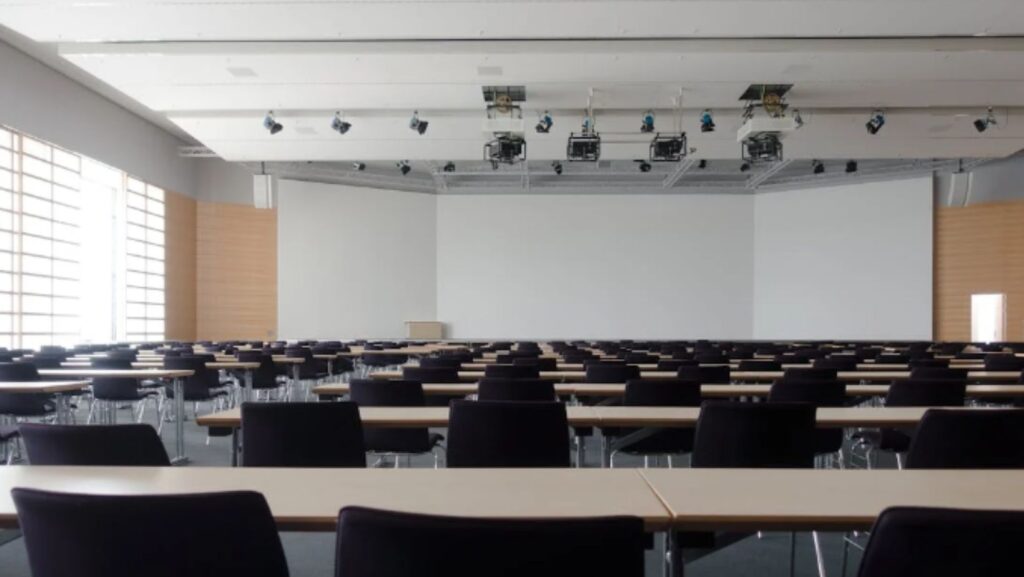Efficient storage solutions are crucial for maintaining an organized and productive environment. With various equipment, supplies, and materials to manage, schools and universities often struggle with maximizing their available space. This guide is designed to help educational institutions enhance their storage capabilities through practical, innovative, and cost-effective strategies. Whether you’re dealing with a small classroom or a large campus, our comprehensive tips and solutions will ensure that you can efficiently store and manage all necessary items, enhancing both functionality and aesthetics.
Innovative Storage Solutions for Classrooms
Classrooms often face the challenge of limited space while needing to store a wide range of educational materials and student belongings. One innovative solution is the use of modular shelving units that can be easily adjusted to accommodate different sizes of items, maximizing vertical space. Rolling storage carts with multiple compartments provide flexibility, allowing teachers to move supplies as needed. Another creative approach is a teacher cart for classrooms, which can be used to organize and transport frequently used materials from one class to another. This not only saves space but also increases efficiency. When it comes to student belongings, lockers can be replaced with wall-mounted cubbies or hanging organizers to save space and promote organization.
Efficient Use of Vertical and Overhead Space
Making the most of vertical and overhead spaces is an effective strategy to increase storage without sacrificing valuable floor area. One practical solution is installing tall cabinets or shelving units that utilize the entire height of a room.

By doing so, educational facilities can store infrequently used items on higher shelves, keeping them accessible but out of the way. Overhead storage racks are another excellent option, particularly in spaces like workshops or art rooms, where bulky equipment can be safely stored above head height. Using wall-mounted pegboards or magnetic strips allows for the hanging of supplies such as tools and art materials, keeping them organized and within reach.
Implementing Multifunctional Furniture
Multifunctional furniture is a game changer when it comes to efficiently utilizing space in educational facilities. These versatile pieces serve multiple purposes, reducing the need for separate items and conserving space. For example, desks that double as storage units with built-in shelves or drawers can declutter classrooms while providing students with personal storage for books and supplies. Folding tables and chairs offer the flexibility to transform a room’s layout according to different needs, allowing for easy reconfiguration during various activities or events. Additionally, benches with hidden storage or convertible seating arrangements cater to dynamic educational settings where adaptability is key.
Digitization for Reducing Physical Clutter
Digitization offers a powerful solution for reducing physical clutter in educational facilities. By converting paper documents and physical records into digital formats, schools and universities can significantly minimize the space required for storage. Implementing a digital document management system allows for easy organization, retrieval, and sharing of important files, reducing the need for filing cabinets and paper archives. Additionally, digital platforms can store teaching materials and student work, eliminating the need for physical copies and printouts. This transition not only frees up space but also enhances efficiency and collaboration, as digital files can be accessed anytime and anywhere.
Most Practices for Inventory Management
Effective inventory management is vital for educational facilities to ensure that all necessary supplies and equipment are readily available when needed. One of the best practices is maintaining a detailed and up-to-date inventory list. This involves cataloging all items, categorizing them appropriately, and noting their quantities and locations. Using inventory management software can streamline this process, providing an easy-to-access digital record that can be regularly updated.
Regular audits are another essential practice, allowing staff to verify inventory levels and identify discrepancies or shortages. This proactive approach helps prevent stockouts and ensures timely replenishment of critical supplies. It is also beneficial to establish a reordering protocol, where minimum stock levels are defined for each item. Once these thresholds are reached, an automated reorder can be triggered, ensuring seamless supply continuity.
Additionally, organizing inventory storage efficiently is crucial. Group similar items together, label shelves clearly, and implement a first-in, first-out (FIFO) system to manage the usage of perishable goods or resources with short lifespans. Training staff members on these practices and the use of inventory management systems ensures consistent and accurate inventory control, reducing waste and improving efficiency throughout the educational facility.
Budget-Friendly Storage Ideas
Educational facilities often operate under tight budgets, making cost-effective storage solutions essential. Utilizing repurposed materials is a smart strategy—old filing cabinets, for example, can be transformed into art supply organizers or science material storage units with a fresh coat of paint. Pallets and crates can also be turned into custom shelving units or storage bins, providing flexibility and functionality at a fraction of the cost of new store-bought items.
Implement DIY projects by involving students in building simple storage solutions. This not only saves money but also fosters creativity and hands-on learning. Hanging shoe organizers can be inexpensively repurposed to store smaller items like calculators, art supplies, or flashcards, keeping them neatly organized and readily accessible.
Additionally, consider utilizing community resources, such as local organizations or businesses, which may be willing to donate or offer discounts on storage materials. By exploring these budget-friendly options, educational facilities can create effective storage systems without exceeding financial limitations.
Engaging Faculty and Students in Storage Solutions
Involving faculty and students in the development and implementation of storage solutions can significantly enhance the organization and functionality of educational facilities. By tapping into the insights and creativity of these key stakeholders, institutions can devise tailored solutions that address specific needs and encourage community ownership. Faculty can contribute valuable ideas based on their day-to-day experiences, identifying particular challenges and suggesting practical improvements. Establishing committees or holding workshops allows for collaborative brainstorming, ensuring diverse perspectives are considered.

Students, too, can play an integral role by participating in the design and creation of storage solutions. This engagement not only aids in the development of practical storage options but also provides an educational opportunity where students learn problem-solving, teamwork, and project management skills. Encouraging student-led initiatives, like repurposing or organizing classroom items, fosters a sense of responsibility and pride in their learning environment. When faculty and students work together towards enhancing storage capabilities, it cultivates a supportive and efficient educational setting that benefits everyone involved.
Enhancing storage capabilities within educational facilities is a multifaceted endeavor that requires strategic planning and engagement across the institution. By implementing innovative storage solutions, maximizing vertical and overhead spaces, and incorporating multifunctional furniture, schools can significantly improve their organizational efficiency. The transition to digitization further complements these efforts by reducing physical clutter and enhancing accessibility. Maintaining effective inventory management ensures that resources are always available, while budget-friendly ideas and community involvement keep solutions cost-effective. Engaging both faculty and students in the process fosters a collaborative environment, empowering the educational community to take ownership of their space.



